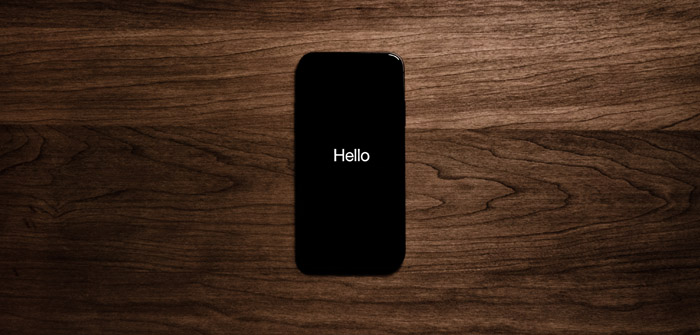(Photo | Pexels)
Let’s get nostalgic: Henry Ford built the first mass-produced, affordable autos in the world, the 22 horsepower Ford Model T, with a top speed of 45 miles per hour, however, there were few paved roads and most roads were one shared lane, which dramatically limited their speed and how many cars could travel in the same direction at the same time. How does this relate to cellular networks and 5G? We’ve achieved orders of magnitude increases in computing power and decreases in cost. However, we’re constantly constrained by the digital paved roads, i.e. bandwidth.
5G promises to increase speeds by 20 times with latency rates (i.e. lag or delay) of only 1 to 4 thousandths of a second. It will allow billions of devices to simultaneously access the network (i.e. lanes). 5G is a combination of technologies such as small-cell MIMO (multiple input, multiple output) antenna arrays, beamforming wireless transmission methodology and Device to Device Communication (D2D) to name a few.
How groundbreaking is 5G? Magnitude Ten on the Richter Scale.
The Promise
Near-Instantaneous Response — With the advent of AI-controlled tech such as robots, electric vehicles, airplanes, drones, IoT devices, etc., sub-millisecond delays are required. Remote surgery is just one example where speed and latency constrain its use. A doctor needs the robot, and the live video stream, to respond to his movements with no discernable lag. 5G makes conducting complex surgery in remote areas a reality.
Billions of IoT Devices As we expect more from our internet-connected devices (video/voice/chirps/data), 5G’s tech will provide the bandwidth through hundreds-of-thousands of cell towers ensuring full coverage, with data centers crunching data and feeding it back in thousandths of a second. Statista forecasts the total number of connected devices will reach nearly 27 billion the end of this year, and 75 billion by 2025.
Enabling Breakthrough Exponential Technologies — Virtually all of tech depends on higher speeds/bandwidth with low latency. Combining 5G bandwidth with cell phones, the cloud, robotics, autonomous vehicles, mass-deployed IoT devices and other game-changing tech will bring about tectonic shifts in virtually all industries. One use-case is the autonomous auto/truck. 5G will enable vehicles to communicate with each other real-time, auto-adjusting speed, distance and lanes without needing to communicate through a centralized AI system every millisecond. Beamforming will tightly broadcast signals to the desired phone.
The Challenges
Cell Towers — 5G requires a dramatic increase in the number of base stations (i.e. cell towers) to achieve the required cell coverage. Millimeter-length radio waves need direct line-of-sight to work and can easily be distorted by all sorts of common obstacles (buildings, cars, trees, etc.). Verizon, Sprint, T-Mobile, and AT&T have rolled out small cell towers in some major metros but they’re still working out real-world issues with the tech.
5G Phones — You’ll need a 5G-capable cell phone. There’ve been lots of announcements but few available. Motorola’s Moto Z3 5G is available now, which is really the 4G Z3 with a 5G Moto Mod attachment to allow it to utilize 5G networks. Don’t hold your breath, the first 5G iPhone is at least a year away.
Frequency Bands — The radio frequency (RF) bands used by 5G networks (sub-6-ghz range and millimeter waves) require much more complex hardware designs than current lower-frequency equipment. This is costly and makes it more difficult to integrate equipment from multiple vendors. Other countries may mandate different bands, which adds to the complexity.
Hype vs Reality — Although 5G is now appearing in some cities, it’s still a way off (2021-2024) before it’s readily available with enough cell phone models designed to utilize it. Watch out for marketing hype, attaching the 5G label to existing non-5G services, like previous deceptive marketing efforts around 3G and 4G rollouts.
My Take
Remember getting Netflix via mail? We wanted on-demand streaming videos, but the internet was too slow. A leap in bandwidth created mega-corps virtually overnight such as YouTube (began streaming 2005, acquired by Google), Hulu (began streaming 2007, owned by Walt Disney) and Vimeo (began streaming 2004, acquired by IAC).
My stock portfolio will be loaded with next-wave tech companies requiring precision/timing such as: in-home medical devices, remote surgery and autonomous traffic control systems (for land, sea and sky). However, we can NEVER have enough speed/bandwidth. Industries will create new technology to utilize every bit of it. I’ll be complaining about why my petabyte-sized Google Universe takes so long to load. Ugh, when is 6G coming?
Preston Callicott is CEO of Five Talent Software, Inc. based in Bend, Oregon. His hope is writing articles such as this one will allow his mind to stop waking him up at 4am with “aha’s” and “oh-my’s” about the massive impact tech has on our collective future.
Find Out More




